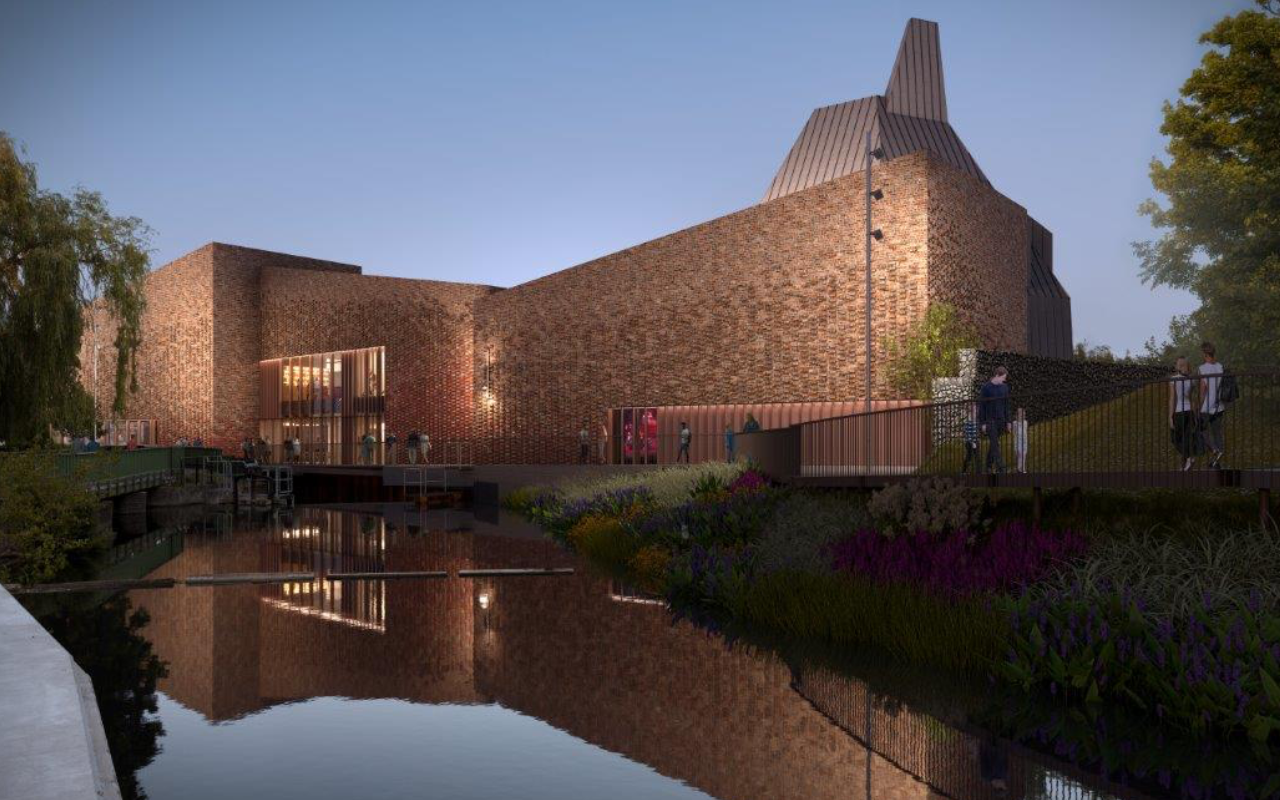
Photo: Hertford Theatre
Time to ditch the word ‘theatre’?
Theatres have always been spaces to be heard in. That’s why we have an auditorium and an audience. Rhys Thomas unpicks their purpose in the 21st century.
Theatre buildings have been around for millennia. From the amphitheatres of Greece, via the wooden ‘O’ of Shakespeare’s Globe, to the tiered, ornate Victorian theatres of Frank Matcham, they are places for people to speak and listen, to gather, to tell stories and exchange ideas, arenas for conversation, debate and diverse opinion.
There are very few other spaces in the modern world where this happens with such regularity. Places of worship? Perhaps, but they tend to repeat a single story. Football and sports stadia? Certainly, and in huge numbers. Old Trafford is known as the Theatre of Dreams. But the game is the same each week with entertaining or not-so-entertaining variations. And let’s not forget more people go to the theatre each year in London alone than attend Premier League football matches across the whole UK.
Theatres and arts buildings aspire to be democratic spaces where creative endeavour is available to all, where the programme of activity is developed by groups of people listening to other groups of people. Presenting the best possible work for the best possible reasons. Developing the artistic offer alongside any financial obligations while growing audiences for a range of diverse work and participatory opportunities.
Importantly however, and contrary to Shakespeare’s Hamlet, the play is often not ‘the thing’. It might be a dance class, workshop, blood donor session, film, live broadcast or, more recently, a Covid vaccination that is ‘the thing’ that brings people into the building.
Meaning and purpose begins with design
So, if a theatre is not just about plays then what is it about? How might a theatre building of today – and tomorrow – have meaning and purpose? This question speaks to the heart of the new Growth and Legacy Scheme for Hertford Theatre.
Designed by Bennetts Associates, the proposed new building enjoys an upgraded 550-seat auditorium, 150-seat studio theatre, 3 full-time cinema screens, 2 community spaces and 2 café-bars as well as uncovering a 12th Century motte – a remarkable heritage site sitting alongside the theatre and currently hidden under a cloak of nettles and weeds.
This development significantly increases the potential for a building to engage with more people, more of the time. But new assets alone don’t define the meaning and purpose of the building. The starting point for this is in a design that unlocks and reflects the relevance of Hertford Theatre to its audiences and the community.
What has emerged are a series of spaces designed to encourage people of all ages and abilities to share the experience of being involved; whether as an audience member, participant, volunteer or a member of the team. Encouraged to get involved with films, live shows, classes, community activities, workshops or just to get involved with a great cup of tea and all playing their part in the biggest production of all: the building itself.
Is the design something we recognise as a theatre?
I am frequently struck by how the perception of a theatre is often at odds with what it actually does. Anyone who works in the sector will have heard one or more of the following: It’s not for me. It’s boring. It’s arty-farty. It’s expensive.
These aren’t uncommon or surprising opinions and, at times, they are wholly reasonable views which the new Hertford Theatre building seeks to address – not only with shifts in the programme but in operation.
The building will function without a traditional box office, utilising automated ticketing machines supported by a vibrant welcome team of volunteers and staff. The foyer will be replaced with a dynamic, community-centred café-bar and formal offices are to be removed creating a relaxed, social environment for the team supporting new ways of blended working.
These moves are to encourage an open, free-flowing relationship between the building and its users. Wayne Hemingway (of HemingwayDesign, our marketing and branding consultants) suggests thinking of the building as a place similar to a town hall or town square, spearheading cultural and economic change across the district of East Herts. A building that acts as a beacon for unity and community. A space that becomes what people need it to be.
Does the very term ‘theatre’ put people off?
But these bold changes designed to unpick preconceptions about theatre and arts buildings are giving rise to a thorny question: is the word theatre right for a building of this nature? More bluntly, does the word theatre put people off?
I wonder if we shouldn’t think about making changes to the name of Hertford Theatre and find a moniker that better reflects what the new building represents, sitting artistic endeavour alongside civic engagement, rejuvenating and inspiring the imaginations of our audiences in an open, safe and accessible environment.
Storyhouse in Chester, Home in Manchester, Cast in Doncaster and Kiln in London are all excellent examples of theatres and arts buildings that have taken this approach. But part of me thinks we should cherish the thousands of years old tradition and embrace the label ‘theatre’ but work harder to tell the story of what a 21st century theatre can be. Encouraging our audiences and our community to share in the connectivity and joy of a modern, relevant, theatre building. I’d love to hear what you think.
Rhys Thomas is Director at Hertford Theatre.
Join the Discussion
You must be logged in to post a comment.